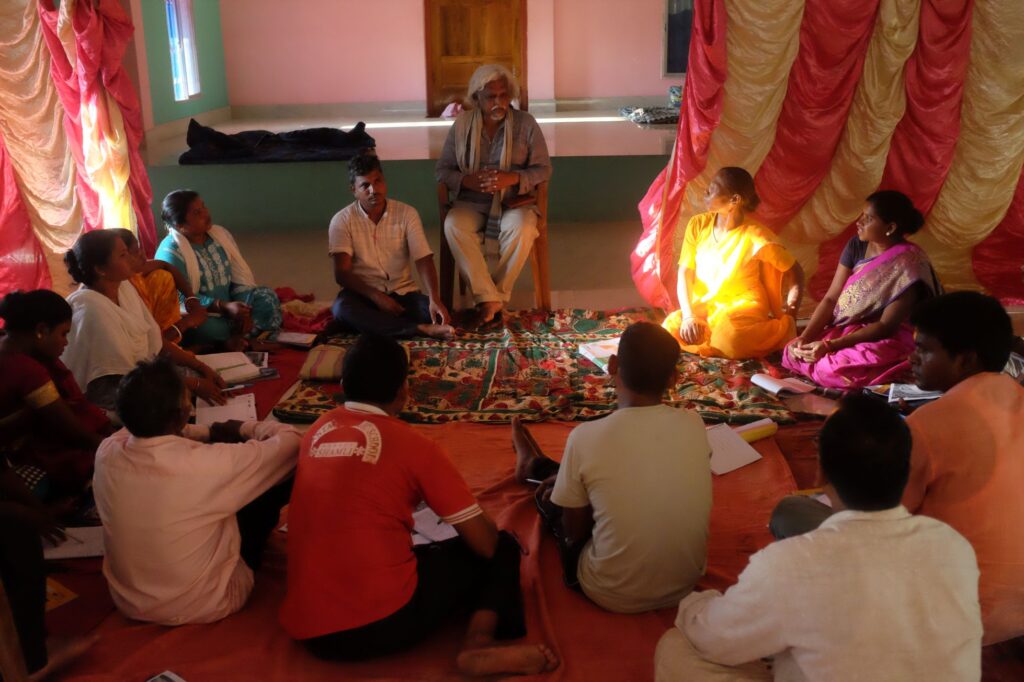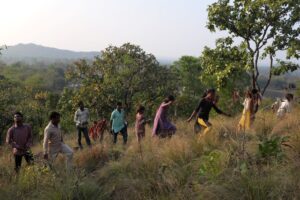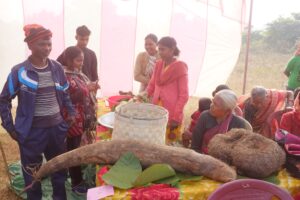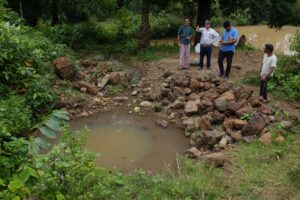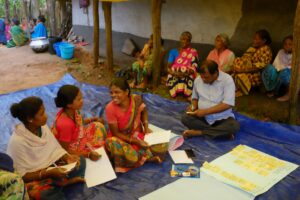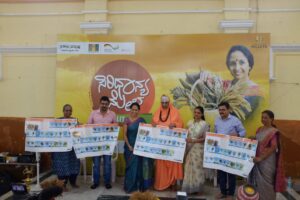On the 23rd and 24th of June 2023 the staff, partners and community resource persons of the Eastern India initiative came together at Mukundaram Community Hall, in Ichharia village, Bankura District, West Bengal. The purpose was to reflect on progress and activities carried out in the first half of 2023, draw up plans for the upcoming months, introduce new community resource persons to the rest of the team and acquaint them with the goals and objectives of the project and the initiative as a whole. The program also involved sessions on organic agriculture practices and Agroecology approaches were also planned. The program was attended by a total of 24 participants (16 men and 8 women)
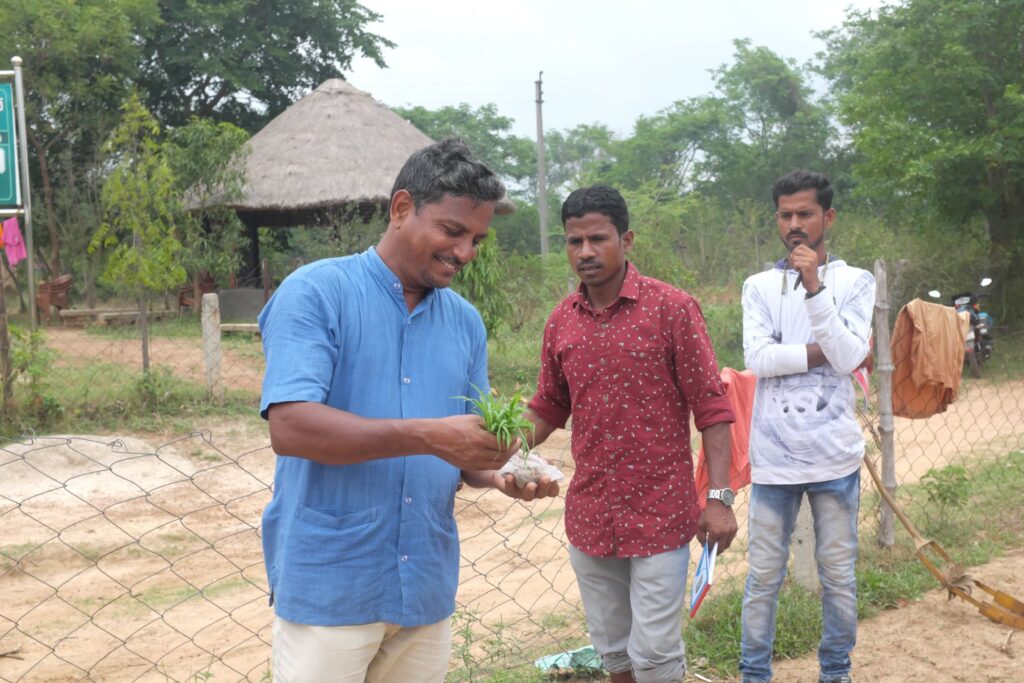
Our host was Bhairab Saini, a farmer from the neighbouring village of Panchal, who has been championing the cause of organic agriculture and conservation and promotion of traditional seeds since 2004. Bhairab welcomed all the participants and shared a little about himself and work being carried out in the area. He shared that while he had been practicing farming since 1993 he only started to practice and promote organic farming from 2004. The backdrop of his shift to organic was based on his assisting experience in 2002 with Dr Debal Deb, an agricultural activist and ecologist who started his own Rice Research Station (RRS). From 2010 onwards he began to focus on the conservation of traditional seeds, initially focusing on paddy varieties and subsequently with the support of Soumik Banerjee who is also part of the Eastern India initiative, he has started conservation of a variety of other seeds as well like millets, wheat, maize and cotton. He shared that currently in his village farmers don’t have their own seeds and have to depend on the market for seeds. To address this, he has established a seed bank initiative through which farmers get desi / local seeds free of cost, the only requirement is that they return the same amount or a little more quantity of the seed after harvesting their crops. This is helping with conservation and propagation of desi seeds and enabling farmers to regain control over their seeds. Promotion of traditional seeds alongside organic farming practices is enabling access of families to healthy, nutritious, chemical free food.
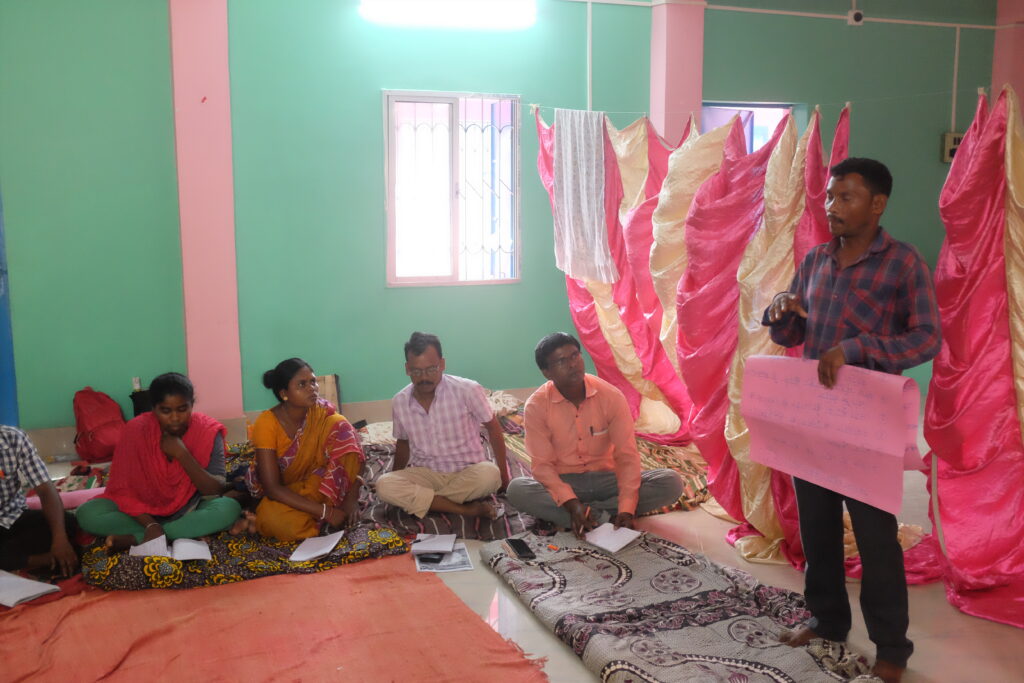
Bhairab was followed by Surja Paharia who has been working in Sundar Pahari, Godda District, Jharkhand for over 20 years and has been associated with Keystone Foundation’s Eastern India initiatives since 2017. He started his journey with Soumik Banerjee and Pradan, initially working to establish and strengthen SHGs and enable the Paharia people to overcome exploitation by the Mahajan (traders and middlemen). He gradually shifted his focus to research on traditional seeds and the traditional agricultural practices of the Paharia people and implementing strategies to safeguard and promote these traditional seeds and associated agricultural practices. When he commenced working on these issues, he found that the crop diversity of the Paharia people had diminished considerably and seeds of several traditional crops like Foxtail millet, little millet, Pearl millet and Job’s Tear had virtually disappeared from the area. He carried out a survey of what was planted in Kurwa plots in the past and found that in addition to a maize, millets and pulses a variety of vegetables like ridge gourd, cucumber, and pumpkin were also cultivated under Kurwa. Since then, through various initiatives like seed distribution drives, community seed banks, revival of Potio Keta (homestead plots) cultivation, promotion of Kitchen Gardens and Nutrition Gardens Surja has been promoting the revival of crop diversity and alongside this the dietary diversity of the Paharia people is also increasing which is making an invaluable contribution towards insuring health and nutritional security. He has also been promoting initiatives to improve the sustainability of the Jara-Kurwa system which includes Forest Gardens of shade tolerant species in forest fallows and Guided Fallows which involves cultivation of legumes like Velvet Bean in the first fallow year in order to improve soil health, suppress invasive species and promote regeneration of native plants and trees. The community has also come together to form the Jungle Bachao Abhiyan Samiti to spread awareness about the environmental challenges facing the area and promote community action to address issues like forest fires and deforestation.
Surja was followed by Guest speaker and resource person Jacob Nellithanam who conducted a session on SRI methods with a focus on finger millet in addition to paddy. Jacob has been an ecological farming researcher, trainer and seed heritage activist for over 35 years having worked extensively with Adivasi and rural communities in Chhattisgarh Madhya Pradesh, Jharkhand and West Bengal. In addition to providing an introduction to SRI methods he also focused on using the SRI approach for the cultivation of Madua / Finger Millet which has been an important crop in Central and Eastern India especially in the semi-arid hilly areas. SRI is not a standardised, fixed technological method. It is rather a set of ideas, a methodology for comprehensively managing and conserving resources by changing the way that land, seeds, water, nutrients, and human labour are used to increase productivity from a small but well-tended number of seeds. Jacob outlined some of key steps of SRI cultivation which included transplanting of 10 to 12 day old seedlings in a line at a distance of 10 inches with low water. He said that SRI methods can work well for local Madua / Finger Millet and Paddy seeds and that seeing the success of the pilot plots particularly the high production without chemical inputs, farmers will come forward to adopt these techniques in their lands. He stated that even in lands not being cultivated in tribal lands like Goda Jamin – upland plots, can be brought under SRI madua cultivation. Jiban Hansda, CRP from Purulia raised the challenges that lowland paddy cultivation faces in their areas due to flooding and seedlings being washed away. Jacob shared that in the old days there were elaborate drains around paddy fields which used to prevent flooding and washing away of seedlings. In response to Jiban’s second question regarding the kind of land suitable for Madua cultivation Jacob shared that Goda Jamin (Uplands) and plots where water does not remain are suitable for Madua cultivation. He shared that some varieties of Madua could be sown using SRI techniques at the beginning of the monsoons towards the end of June, while shorter duration varieties could be sown in August.
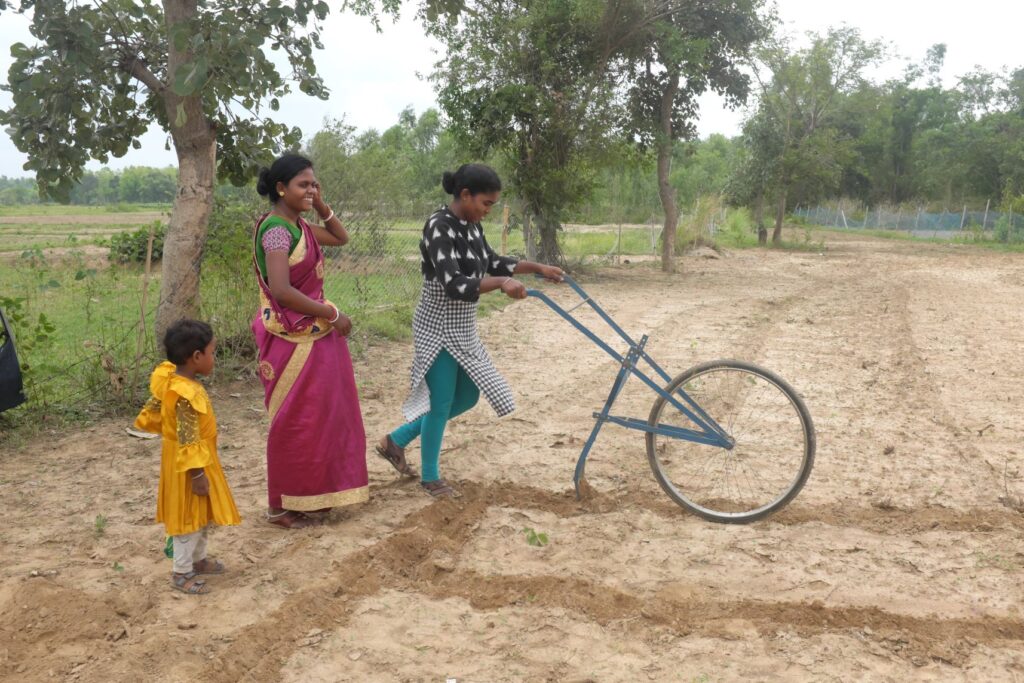
The second day of the program commenced with a visit to Bhairab’s farm for field demonstrations. The first activity was a demonstration of SRI techniques by Jacob. Jacob explained that seeds should be planted in a raised bed Nursery ensuring that water does not collect. He demonstrated a method for selecting seeds. This involved mixing salt in a mug of water till a potato or egg floated. Paddy seeds were then put in the mug and the seeds that floated were removed and the seeds that collected at the bottom were fit for sowing. After removing the seeds, they should be washed thoroughly to ensure no saltwater remains. He also explained how to prepare the selected seeds for planting in the nursery bed. The seeds should be soaked overnight and then tied in a Jute sack and weighed down for around 24 hours. Once the roots emerge, they are ready for planting in the beds. We then made our way to one of Bhairab’s fields where Jacob provided physical demonstrations of bed making, ploughing the land, transplanting seedlings, and use of weeder. Bhairab and Jacob demonstrated how to prepare a raised nursery bed. Jacob shared that seeds can be sown by hand in a line in the bed, and then covered with a mix of mud and manure and then mulched with Poal (paddy straw) or grass. After around 4 days the seedling will emerge, we can then remove the stray and protect the seedlings by making fencing. Around the 8th day 2 leaves will emerge for paddy seeds and they are ready for transplanting. For Madua we would need to transplant seedlings when they are 15-25 days old while for paddy the seedlings should be 8 to 10 days old. He demonstrated the sowing of Madua seedlings using grass as a substitute. He said that the spacing for Madua seedlings should be 12 inches while for paddy it is 10 inches. Land preparation should not involve deep ploughing and light moisture in the soil is good. Transplanting should be carried out on the day rain is expected or in the evening. Transplanting should not be carried out in a very wet field. After transplanting the root of the seedling should be covered by mud to ensure it is not too exposed to the sun. The participants got to try out the different tools used under the SRI system of cultivation.
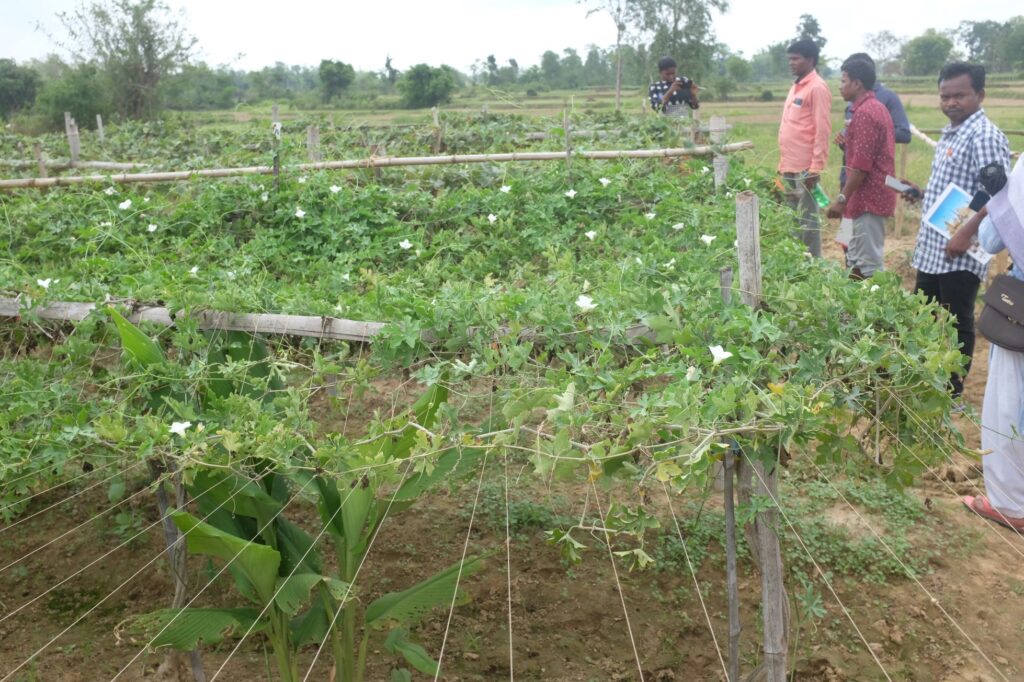
After the demonstration on SRI techniques the participants visited Bhairab’s multilayer farming plot. This was a relatively new plot and tree crops were yet to be planted. Multilayer farming is a type of polyculture that involves growing multiple crops in a single area which is used to optimize the use of land and improve the quality of the soil. Bhairab shared that multilayer farming involves cultivating crops of different heights. The understory comprises root crops and greens like haldi / turmeric, ginger, Kachu / Colocasia, , the middle story comprises climbers and creepers like pumpkin and bitter gourd as well as crops like Bhindi and Arhar, while the upper story comprises tall plants like maize and sorghum and tree crops that could include Lime, papaya, banana and drumstick. Bhairab is facilitating the establishment of pilot Multilayer farming plots in many of the CRPs project areas and this was an opportunity for them to see and learn from a live multilayer farming plot.
After lunch there was an Open Forum on How to take organic farming forward and the challenges involved. The Forum was chaired by Jiban Hansda from Purulia District, West Bengal and Budheswar Mahato from Saraikela-Kharswan District, Jharkhand. Bhairb and Jacob also shared their thoughts and inputs on the subject. The participants outlined the challenges posed by hybrid seeds and their purported higher yields to the survival of traditional seeds and associated organic agricultural practices. They shared real world examples of many traditional varieties of millets, paddy, pulses and vegetables disappearing from their areas and the negative impacts of chemical intensive farming practices on soil, the environment and human health. Everyone concurred that the best way to convince others to do organic farming was to do it yourself and many CRPs are carrying out organic farming using local seeds on their own lands. 5 CRPs came forward to volunteer to make organic inputs in their areas and make them available to farmers wishing to practice organic farming. Budhewar shared that in his area with poor rainfall last year farmers using hybrid seeds with chemical inputs did not have a good harvest and such examples can help motivate farmers to adopt organic practices. Despite the tremendous challenges involved in bringing about a shift to organic farming practice all participants pledged to work for the promotion of organic farming in their areas by propagating and spreading awareness about different techniques and systems of organic farming.
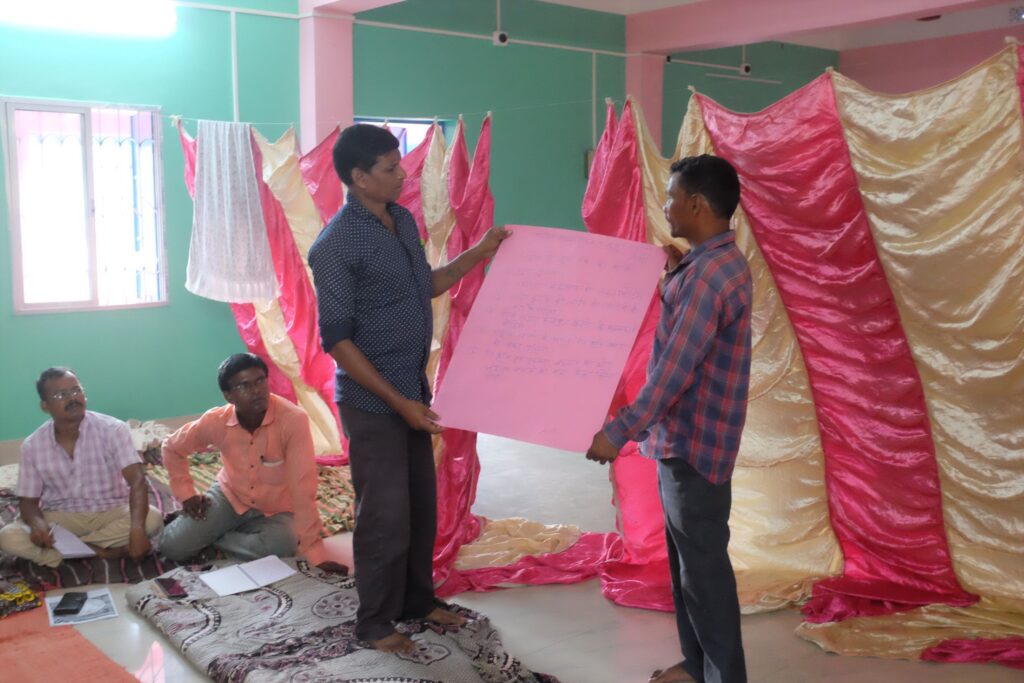
The program concluded with the CRPs from different areas sharing updates of activities they had carried out in the last 3 months and presenting an action plan for the next 3 months. The next three months will comprise the peak of the agriculture season and the CRPs would be engaged in a variety of activities to promote traditional and organic agriculture practices and revival and conservation of local seeds. These would involve trainings and awareness programs on organic inputs, distribution of a variety of local seeds like little millet, foxtail millet, pearl millet, finger millet, sorghum, maize, pulses, local paddy varieties and vegetable crops; establishment of Kitchen Gardens and pilot Multilayer farming plots; establishment of Forest Gardens of shade tolerant crops cultivated in forest fallows along with trees. In addition to agriculture related activities CRPs would also carry out activities dealing with water security issues, land and Forest Rights, promotion and conservation of wild and uncultivated food, gender justice and climate action.

